Made With Clay & Waste, Gujarat Architect’s Buildings Are 50% Cheaper & Cooler!
From a discotheque with 90% reusable materials to a restaurant constructed with no carbon footprints, Manoj Patel interweaves aesthetics, traditional practices and local construction materials with modern designs to build eco-friendly spaces

Manoj Patel, a renowned architect in Gujarat, was a third-year student of DC Patel School of Architecture in Vidyanagar when he was introduced to sustainable architecture and was bowled over by the concept.
While he only studied the subject for a couple of semesters, it was enough to leave an everlasting impact on him, so much so that he pursued his Masters in Climate Change and Sustainable Development in 2014 from CEPT University, Ahmedabad.
However, right after completing the Masters, he realised the stark difference between acquiring knowledge and implementing the same on-field.
Manoj did come across fellow architects who were implementing eco-friendly practices to build green homes, but none of their techniques were appealing enough.
He wondered why people set up solar panels and rainwater harvesting structures at their home and office buildings when they used modern construction materials like cement, glass and marble everywhere else. Why couldn’t people associate sustainable materials like mud and timber with modern apartments?

“Since building a house has become an expensive affair, most people want to go the conventional way. My aim was to interweave aesthetics, traditional practices, local construction material with modern designs. I didn’t want to import materials made in mass production, I preferred unique hand-crafted ones,” Manoj tells The Better India.
Wanting to do something different, the 29-year-old founded his own firm named ‘Manoj Patel Design Studio’ (MPDS) in 2015. Today, the eco-friendly architectural firm is reviving traditional methods like using natural light, locally available and reusable materials to build apartments, restaurants, offices and even a discotheque!
What stands out the most among all his techniques is the use of refurbished earthy red tiles, a regional material. He uses 40 per cent of the waste clay tiles, thus saving on construction costs. He designs them in wavy and boxy shapes for an aesthetic look.
Besides, using them as a facade, Manoj is also creatively using clay tiles to replace plastic plant pots, as they retain water for a longer period and even make the air cooler.

Speaking about the inspiration behind using the earthy tiles made from clay stems, Manoj says:
“Using red clay tiles to construct roofs is a peculiar feature of old houses in Gujarat. When I studied them, I found how they were designed to withstand extreme weather conditions like heat and rain. They are insect-resistant, fireproof, and they have a longer lifespan than the conventional ones. For any architect, these features are a jackpot.”
Manoj also studied the markets before he decided to make clay tiles his prime material. To his surprise, he found out that 50 per cent of factories manufacturing the earthy tiles in Gujarat’s Morbi district shut down due to negligible demand a few years ago.
“The revenue loss is not limited to the factories; even the small-time kumbhars (potters) are affected. Not only are they out of jobs but their skills are also dying,” he adds.
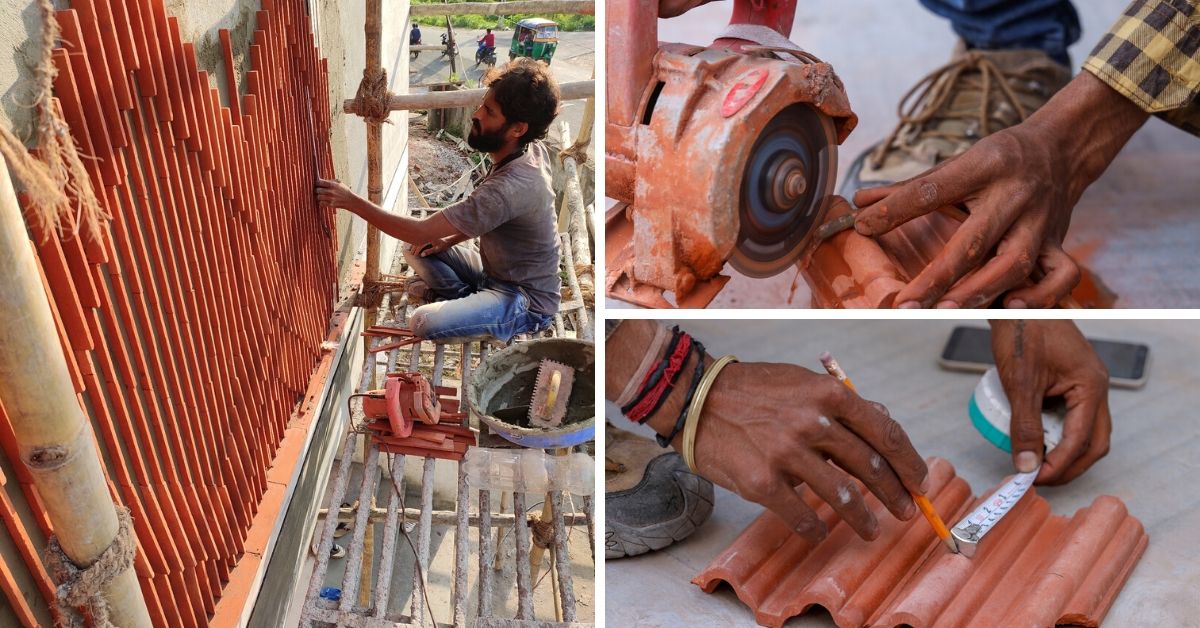
Thus, using red tiles is turning out to be a win-win for everyone–Manoj, his clients and potters, whom he hires from Vadodara.
From Red Tiles to Reusing Scrap, a look at Manoj’s 3 Durable & Sustainable Projects
- Clay Tiles As Facade For A House
The client’s brief was simple. Use modern materials with a sustainable point of view that should be within the set budget. However Manoj was highly excited as this was his first experiment with tiles, and he used V-shaped sloping roof clay tiles on the exterior of the building.
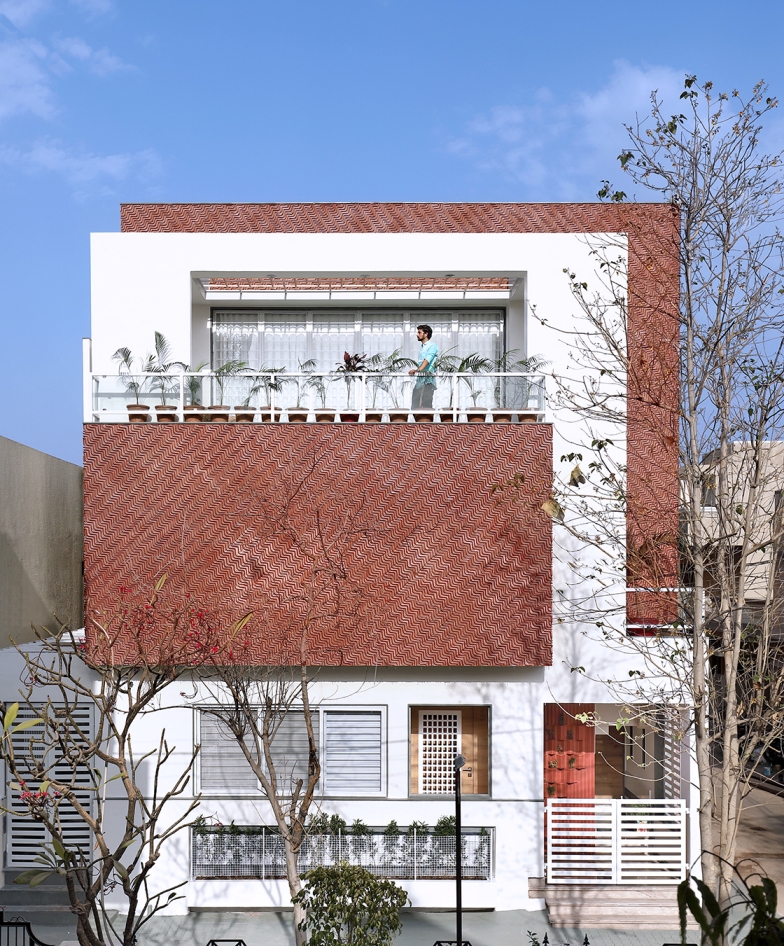
A 50-day trial run was conducted in Manoj’s office before presenting the final look to the client. The prototype was successfully tested for extreme weather conditions, leakages and durability. They even kept the tiles in water for 24 hours to check its waterproof properties.
He sourced 40 per cent of the tiles at zero cost, and the remaining came at Rs 15,000. “We used damaged tiles of which 20 per cent were those that were damaged during transportation.”
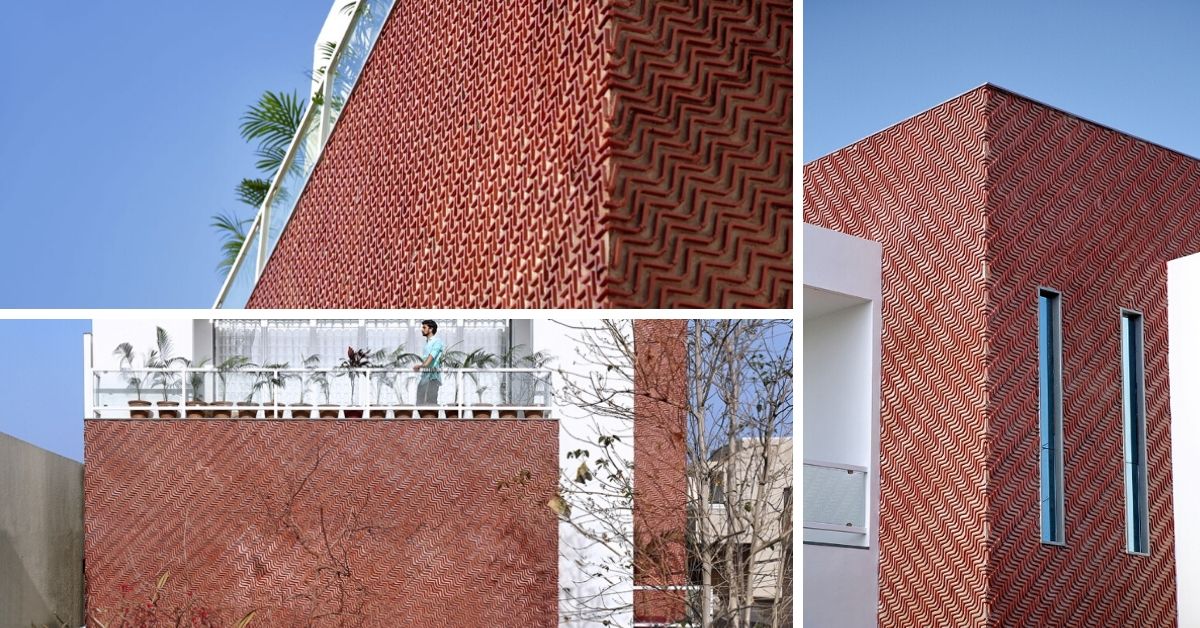
The zig-zag layering of tiles was done taking the sun’s movement (from south to west) in consideration. The tiles provide shade throughout the day, thus maintaining a cool temperature.
“We are satisfied with our new house as it has creatively and climatically resolved the summer heat issues faced by us in our old house. The shadow casting created through the clay tiles has led to several enquiries, from locals as well as tourists, about these unique designs,” says Sanjay Gandhi, the owner of the house.
- Restaurant With a Zero Carbon Footprint
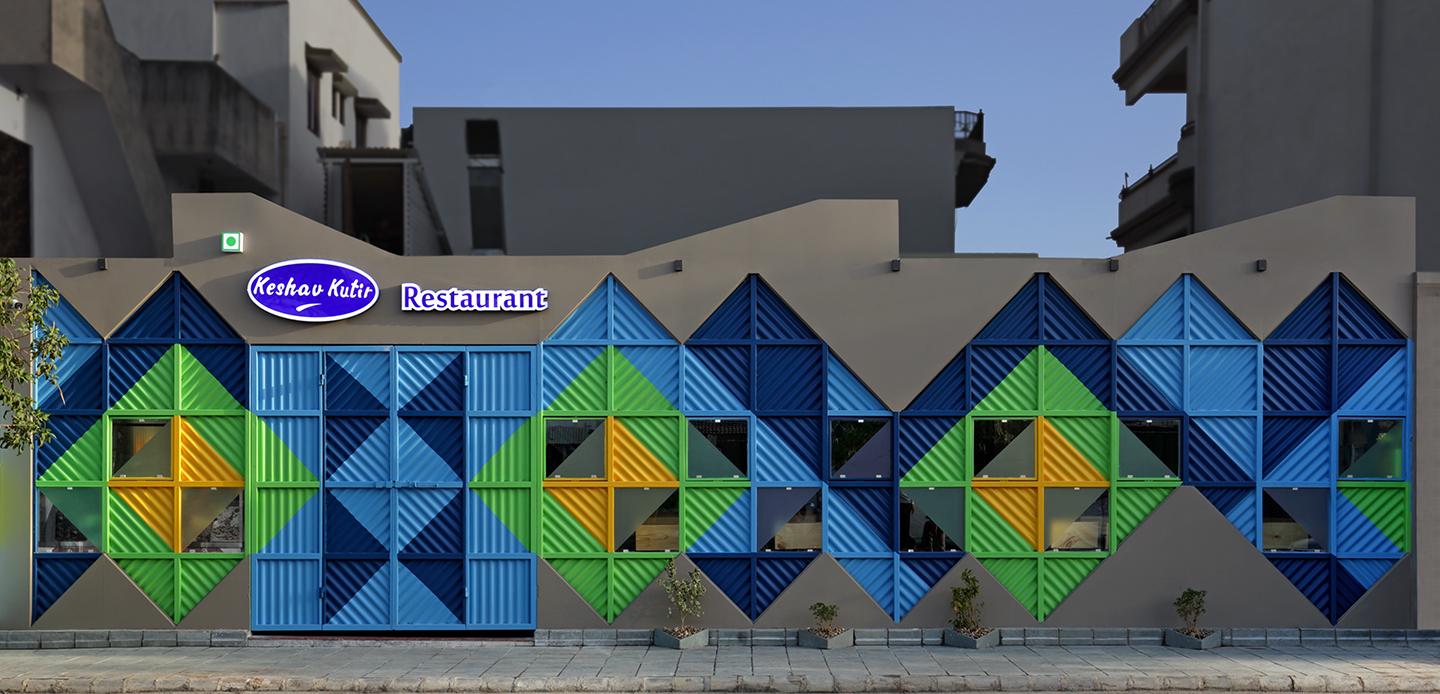
Manoj’s Vadodara-based client wanted to build his restaurant ‘Keshav Kutir’ on a 5-year leased land with a possibility of discontinuation of the contract. In such a case, building another restaurant within such a short span would be an expensive affair. So, the architect suggested constructing it in a way that it could be dismantled easily and relocated elsewhere.
While the client agreed, he put forward the condition that it should look attractive, vibrant, colourful and should have a ‘cool’ vibe.

To minimise heat, corrugated metal was reused on the roof and entrance. Additionally, waste thermocol was installed as insulation to trap the heat from the roof. Insulation turned out to be a low-cost affair as he spent only Rs 2,000 on a 1,600 sq ft area. Interiors were also done with waste metal in a zig-zag pattern for a dynamic look.
Apart from keeping up with the aesthetics, metal sheets are also easy to dismantle and can be reused multiple times, thus leaving zero carbon footprints in the process.
- Discotheque with 90 Per Cent Reusable Materials
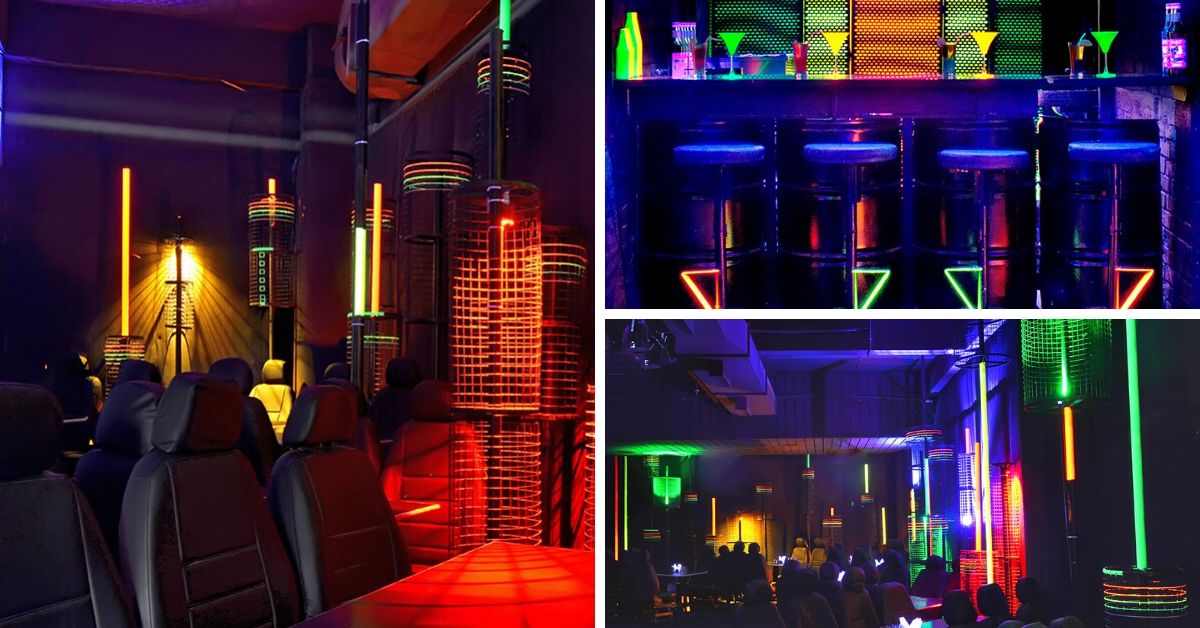
Like the restaurant mentioned above, this client too wanted his lively discotheque constructed in a way that could be dismantled easily.
This was one of his most challenging projects, as Manoj and his team had to hunt for reusable materials that would not shatter from high-level music and dance vibrations.
After months of research and experiments, Manoj zeroed-in on multiple scrap materials.Like, for the entrance, he used tin lids and painted them in neon colours to appeal to the youth. He used four barrels to set up the bar. The entrance door is constructed from waste plywood.
Meanwhile, 76 car seats were procured from the dump yard for the seating arrangement, and car rims were repurposed as seats in the mocktail area. The internal partitions between the kitchen, mocktail, DJ booth and sitting area are made using fly ash bricks. For decor, he reused waste beer bottles, tree guard mesh and MS pipe and paper to make artificial plants.
Conclusion

In his five-year career, Manoj has worked on over 50 sustainable projects, and close to 12 of them involved using waste clay tiles, that employed many labourers. As an experienced architect, he not only vouches for the eco-friendly practices but also for the cost, a considerable advantage or a client.
As per Manoj, the cost of interiors is cheaper by 50 per cent, and the overall construction cost comes down by 20-30 per cent.
With durability, aesthetic, temperature control features and a low-budget by your side, who knew a construction activity could also contribute towards the betterment of our environment?
Get in touch with him here.
Image credits: Manoj Patel
Also Read: Without Steel Or Cement, This Architect’s Recyclable Homes Will Last A Century!
(Edited by Gayatri Mishra)
Like this story? Or have something to share?
Write to us: [email protected]
Connect with us on Facebook and Twitter.
If you found our stories insightful, informative, or even just enjoyable, we invite you to consider making a voluntary payment to support the work we do at The Better India. Your contribution helps us continue producing quality content that educates, inspires, and drives positive change.
Choose one of the payment options below for your contribution-
By paying for the stories you value, you directly contribute to sustaining our efforts focused on making a difference in the world. Together, let’s ensure that impactful stories continue to be told and shared, enriching lives and communities alike.
Thank you for your support. Here are some frequently asked questions you might find helpful to know why you are contributing?


This story made me
-
97
-
121
-
89
-
167











